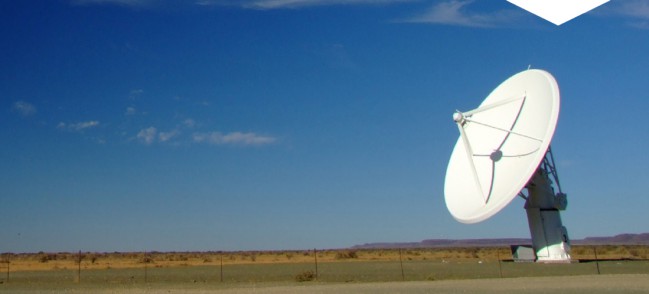Associate Professor Patrick Woudt from the Department of Astronomy has co-authored the first scientific paper based on observations performed with South Africa’s new KAT-7 radio telescope. The paper, which was accepted by the prestigious journal Monthly Notices of the Royal Astronomy Society (MNRAS), was written with Dr Richard Armstrong, a UCT alumnus and Square Kilometre Array (SKA) South African Fellow at UCT, and Professor Rob Fender of the University of Southampton and a SKA visiting professor at UCT.
Titled “A Return to Strong Radio Flaring by Circinus X-1 Observed with the Karoo Array Telescope Test Array KAT-7”, the paper reports on observations of the neutron star binary Circinus X-1 in December 2011 and January 2012, which caught two successive bright radio flares from this unusual binary system. The project was a joint effort with the HartRAO radio telescope near Johannesburg and KAT-7.
South Africa is constructing MeerKAT, the 64-dish radio interferometer that serves as a precursor to the SKA. UCT researchers are leading four of the approved MeerKAT Key Science Projects, representing a quarter of MeerKAT time. One of these projects is the 3 000-hour ThunderKAT survey for astrophysical transients led by Associate Professor Woudt and Professor Fender, which will search for all types of radio bursts and flashes in KAT-7 and MeerKAT data on timescales from seconds to years.
Associate Professor Woudt obtained his PhD in Astronomy at UCT in 1998 and has published 74 peer-reviewed journal articles (27 as first author). His teaching and research career at UCT spans more than 12 years and includes supervising various BSc honours, MSc and PhD students. A member of the International Astronomical Union, Commission 19 (Astrophysics) of the International Union of Pure and Applied Physics and the Council of the South African Institute of Physics, he is the co-principal investigator of ThunderKAT.



Comments are closed.